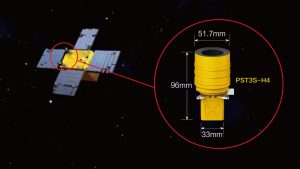Satellite attitude control determines and adjusts the spacecraft’s attitude in 3D space. Sensors collect data. They locate the satellite’s current orientation relative to reference points. Controllers receive this data. Algorithms, such as PID controllers, compute needed corrections. Actuators then apply torque. They realign the satellite.
Precise attitude determination relies on multiple sensors. These provide relative and absolute measurements. Relative sensors track motion changes. Absolute sensors reference fixed celestial bodies or Earth features.

Absolute sensors include:
– Sun sensors: Photovoltaic cells detect the sun’s direction.
– Earth sensors: Infrared scanners detect the Earth’s horizon.
– Star trackers: They match observed star patterns with onboard catalogs. Accuracy reaches arcsecond levels.
– Magnetometers: They measure Earth’s magnetic field. These offer low-cost references. However, reliability drops in varying orbital fields.
Actuators: The “Muscles” of Attitude Adjustment
After attitude determination, actuators apply control. They generate torque. This counters external disturbances like solar radiation pressure, atmospheric drag, or gravity gradients.
Reaction wheels lead three-axis control. Orthogonal wheels accelerate or decelerate. They exchange angular momentum with the satellite. By conservation of momentum, the satellite rotates oppositely. Wheels offer efficiency and fine control. Yet, external torques may cause saturation. Periodic desaturation becomes necessary.
Control moment gyroscopes (CMGs) enhance reaction wheels. Rotors mount on gimbals. They deliver larger torques. Large platforms like the ISS favor CMGs. However, complexity increases mass and cost.
Thrusters provide another option. They eject gas to produce thrust. Cold gas thrusters handle small adjustments. Hydrazine or ion thrusters manage large maneuvers. Thrusters offer flexibility. However, limited propellant shortens mission life.
Satellite attitude control systems divide into passive and active types. Each balances complexity, reliability, and performance.
Passive systems use natural forces. They require no extra energy.
Active systems employ feedback loops. They suit high-precision tasks. These use the actuators above. They achieve sub-degree accuracy. They adapt to dynamic environments. However, they consume more power.
Hybrid approaches combine both. Passive systems set baselines. Active systems make corrections. This boosts efficiency. CubeSats often use passive systems to cut power. Meanwhile, miniaturization brings active systems to small platforms.
Send us a message,we will answer your email shortly!